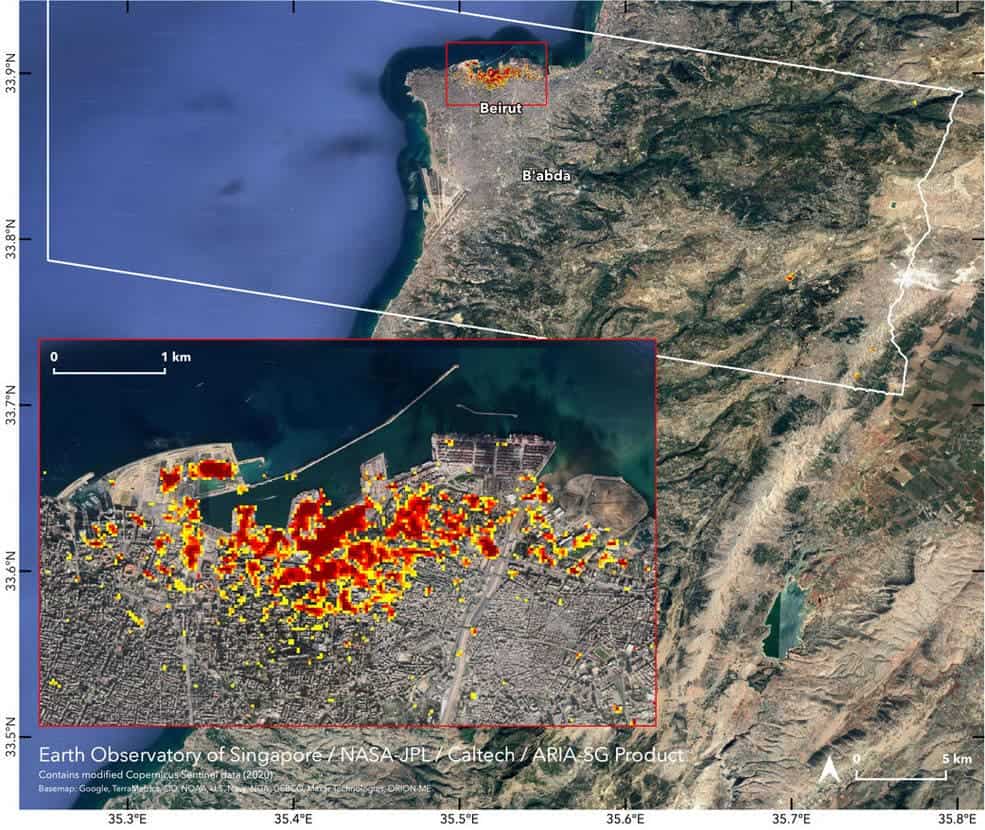On August 4, disaster struck Beirut. A stockpile of 2,750 tons of ammonium nitrate, a chemical used as fertilizer or as an ingredient in bombs, suddenly exploded with a force twenty times greater than that of the GBU-43/B Massive Ordnance Air Blast (also known as the “Mother of All Bombs”), the most powerful non-nuclear weapon in the US arsenal.
At least 135 people were killed and more than 4,000 were injured by the massive explosion that produced a 3.3 magnitude earthquake, which was felt as far as Cyprus, around 240 kilometers (150 miles) away.
The toll of this devastation was recently analyzed by NASA scientists, in collaboration with colleagues from the ESA and Singapore, who employed satellite-derived synthetic aperture data to map the extent of the damage in the Lebanese capital.

Dark red pixels — each covering an area of 30 meters across — represent the most severe damage. These are typically clustered around the blast’s epicenter, the Port of Beirut. Orange pixels represent moderate damage while yellow pixels correspond to areas that sustained less damage.
The destruction in Beirut is thought to have left more than 300,000 people homeless at a time when the country is struggling both financially and politically.
Hopefully, maps such as this can help local authorities identify which areas have suffered the most damage and where people are most in need of assistance.


